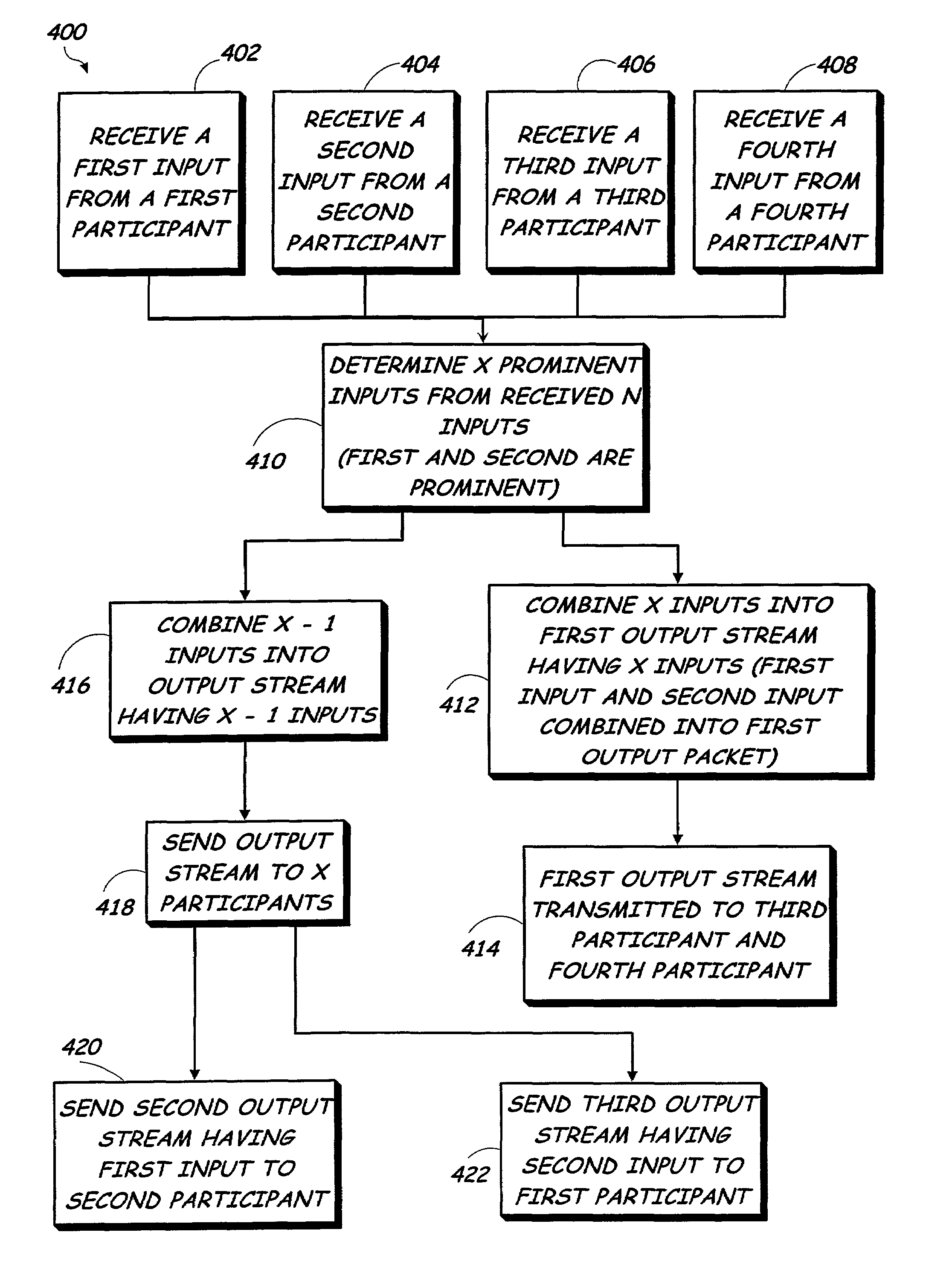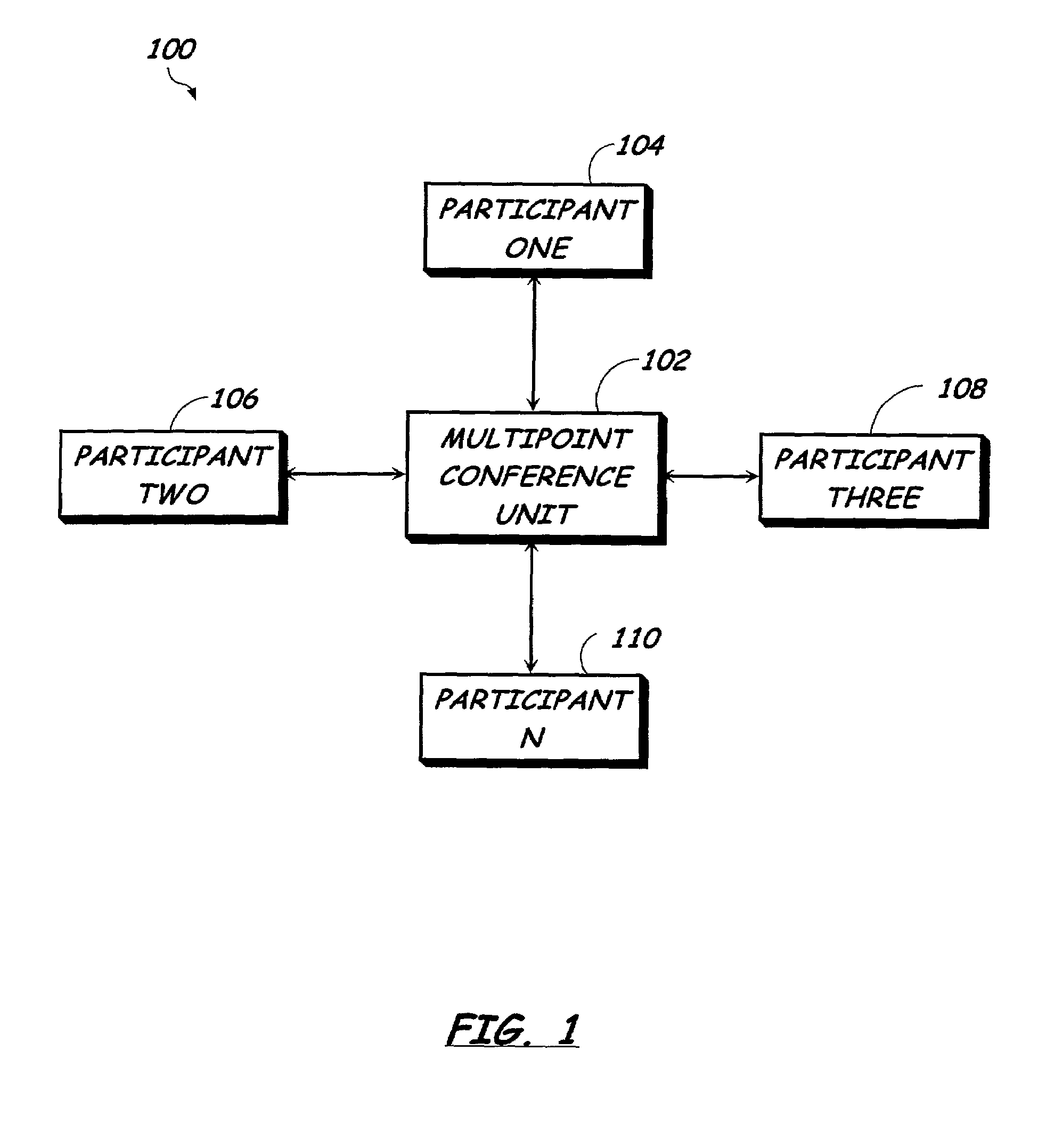Method for background noise reduction and performance improvement in voice conferencing over packetized networks
a packetized network and voice conferencing technology, applied in the field of data transfer, can solve the problems of reducing the quality and utility of conference calls, the method is not feasible in a packetized network, and the echo is typically too strong to be removed, so as to improve the sound quality, the effect of background noise reduction and performance improvemen
- Summary
- Abstract
- Description
- Claims
- Application Information
AI Technical Summary
Benefits of technology
Problems solved by technology
Method used
Image
Examples
embodiment 100
[0023]Referring now to FIG. 1, the present invention is shown wherein a conference call system as utilized by a number of participants is shown. A conference call system, which may be implemented as a multipoint control unit 102 (MCU) in an IP system, enables a plurality of participants to communicate in real time. Each participant may communicate over an input / output device communicatively coupled to the multipoint conference unit so as to enable the participants to interact over a conferencing session. For instance, participant one 104, participant two 106, participant three 108 and up to participant N 110, located in different geographical regions, may participate by means of the multipoint conference unit 102.
[0024]During a conference calling session, background noise may be encountered from “silent” participants in which noise from participants surroundings is received and transferred by the system, even if the participant is not communicating. This problem is magnified with ea...
exemplary embodiment 400
[0030]Referring now to FIG. 4, the present invention is shown wherein a conferencing session involving a plurality of participants is provided with reduced background noise and computational requirements. Four participants are engaged in a conferencing session. A first input stream is received from a first participant 402, a second input stream is received from a second participant 404, a third input stream is received from a third participant 406 and a fourth input stream is received from a fourth participant 408. “X” prominent inputs, in this instance “X” being pre-selected as two, are then determined from the received inputs 410, the two “X” inputs from the first participant and the second participant.
[0031]The “X” inputs are combined into a first output stream, in this instance; the first input and second input stream are combined into a first output stream 412. The first output stream is then transmitted to the third participant and the fourth participant 414. Thus, a single ou...
PUM
 Login to View More
Login to View More Abstract
Description
Claims
Application Information
 Login to View More
Login to View More - R&D
- Intellectual Property
- Life Sciences
- Materials
- Tech Scout
- Unparalleled Data Quality
- Higher Quality Content
- 60% Fewer Hallucinations
Browse by: Latest US Patents, China's latest patents, Technical Efficacy Thesaurus, Application Domain, Technology Topic, Popular Technical Reports.
© 2025 PatSnap. All rights reserved.Legal|Privacy policy|Modern Slavery Act Transparency Statement|Sitemap|About US| Contact US: help@patsnap.com



